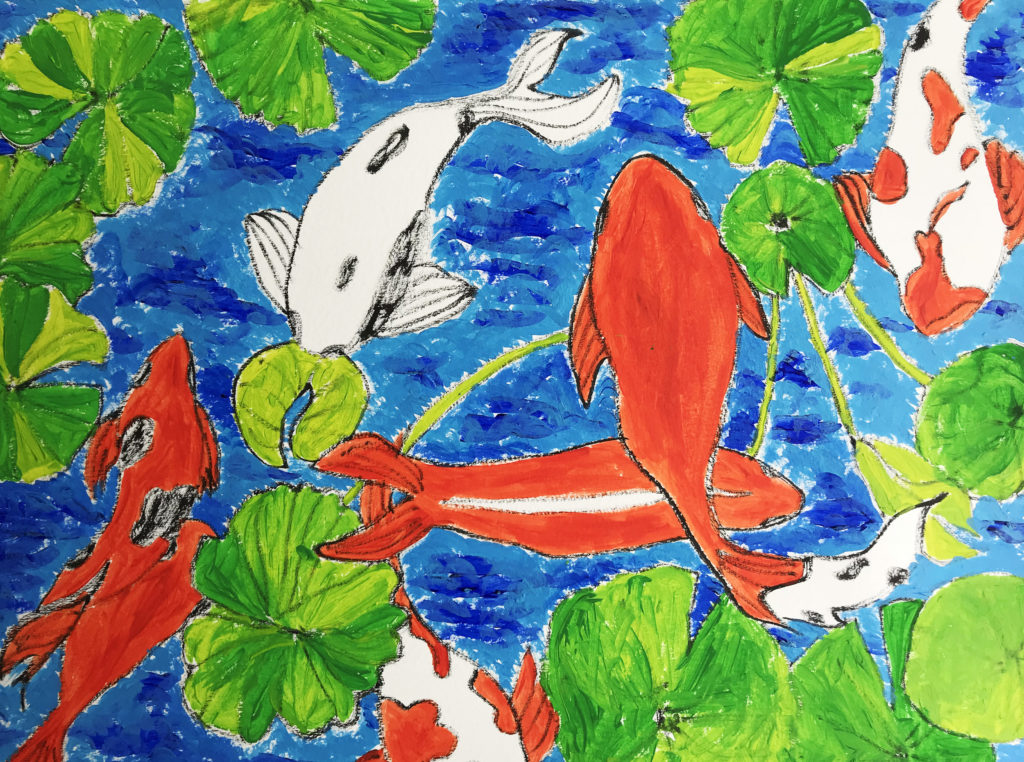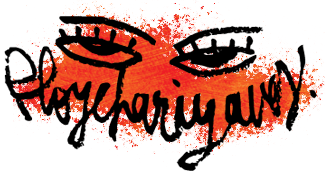A Chinese paintbrush and ink have become my favourite tools for drawing since 2000.
I like Chinese paintings, different strokes of Chinese calligraphy as well as distinctive patterns on Chinaware. Just a few strokes can create an image of different things from our natural environment.
However, my drawing hardly incarnates the typical serenity of oriental art style – the outstanding character of Chinese art forms. On the other hand, my drawing style may be best described as a sharp contrast of strong colours.

My colour choice might be influenced by Fauvism – my favourite art style that I started to know during my study in Europe many years ago.
However, after looking at my drawings, my father once said that the ladies in my pictures looked like Latin women. My younger brother who was working in Africa sent me some pictures created by an African male artist. He said that the brush stroke of African artist reminded him of my paintings.
I was delighted that the Chinese paint brush in my hand could create several beautiful pictures that reminded many people of multiple charms of totally different corners and diverse cultures of the world.
My principal job is to be a writer. In the past twenty years, as a columnist, I contributed to dozens of newspapers and magazines. My articles focused on different aspects of lifestyles including food, health and travel, etc. Moreover, I published dozens of books.
To me, writing was a tool of communication with language serving as a tool. As a writer, I could rethink or revise my ideas to my full satisfaction. Before publication, I would edit and rewrite my articles as many times as possible.
On the contrary, as a painter, I could never control my works as much as I did with my articles or books. As a matter of fact, my hands moved to the command of my heart. Voilà! A painting best represented the contents of my heart.
Whenever I held a paint brush in my hand, I felt in trance or slipped into reverie – the feeling I never experienced when doing a writing job. So naturally, I painted every night before going to bed, especially when I started to write a new book.
After sending my writing through the editing and printing process in a publishing house, I realized that I finished a big bunch of paintings. These by-products made a great contribution to data management in my brain, especially when I would like to concentrate on my work or when I faced stress or frustration.
Paintings helped me surmount the deep anxiety while waiting for family member coming out of an operating room in a hospital. When I felt sad, I always thought of my dog Tiger, who had long gone. Surprisingly, my paintings came out with beautiful colours – much brighter than my paintings during my happy travel. In fact, the paintings in my travel memoires proved to be less powerful than those created during my sorrowful moments.
However, I can be considered a member of minority who prefer the use of bright colours in daily life. Meanwhile most of my friends prefer the minimal style. They opt for white, black, beige and gray with occasional appearance of green trees. Their colour combination proves to be in perfect harmony. I always admire the serenity and tranquility reflected from their works.
Meanwhile, I apply those subtle hues in my bedrooms and personal offices just to create warmth and calmness. Apart from that, bright and strong colours are always my priority, especially when I do paint myself.
In other words, I enjoy creating a combination or a conversation for different colours to talk or interact to each other, or even a stage for them to compete with each other.
It might be ironic that bold colours could make me feel calm and sometimes reach a solution for some problems. I might have painted some pictures while being bogged down with sorrow, anxiety or stress. But one month later, when I looked at those paintings again, I might experience totally different feeling.
Bright colours of some paintings might fill my heart with ecstasy as if I were gazing at a beaming face under a confetti shower in a joyous celebration.
